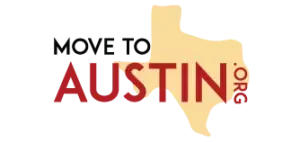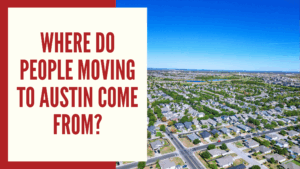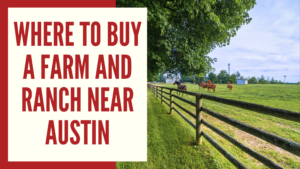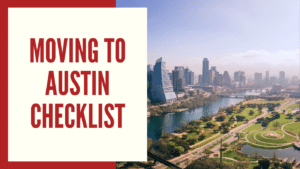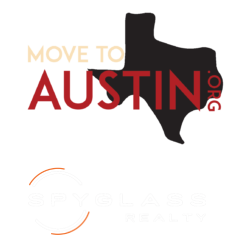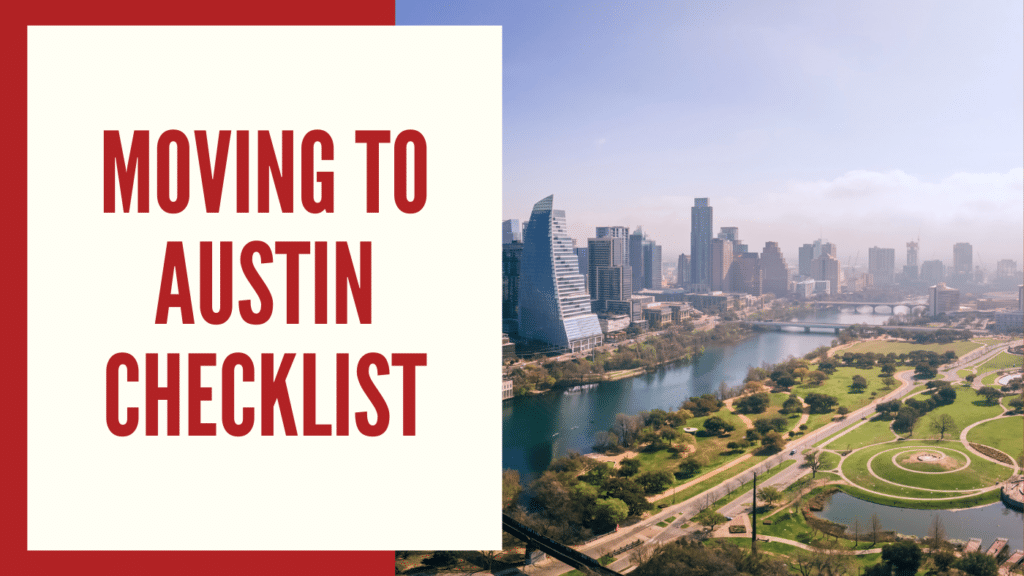
Moving to Austin isn’t just about changing your address, it’s about stepping into a city with its own rhythm, culture, and energy. Whether you’re relocating for a new job, chasing sunshine and live music, or looking for the perfect balance between city life and outdoor space, planning ahead makes all the difference.
This 8-week moving to Austin checklist is your go-to guide for what to do (and when) so nothing gets missed. From setting up utilities and researching neighborhoods to booking movers and finding your go-to taco spot, we’ve got every step covered.
Table of Contents
Before you start dreaming of breakfast tacos and Zilker Park picnics, you need a plan. You’ll absolutely want a detailed moving to Austin checklist to make the transition as smooth as possible. Preparing well means you can jump right into enjoying this energetic city, a gem in the Lone Star State.
This guide is your own moving to Austin checklist, created to help you every step of the way. It’s true, a little planning goes a long way.
Before You Even Pack a Box: Early Austin Prep
Good preparation starts long before the moving trucks arrive. Doing your homework now will save you headaches later. You’ll thank yourself for taking these early steps.
Researching Austin Neighborhoods
Austin is a city of diverse neighborhoods, each with its own character. Think about what you want in an Austin neighborhood. Are you looking for vibrant nightlife or quiet, tree-lined streets with plenty of green spaces?
Downtown Austin offers high-rise living and walkability, while Central Austin provides a mix of residential and commercial areas, often with easy access to amenities. South Congress (SoCo) is famous for its funky shops and eateries; it’s not just about shops, it’s a hub for street performers and a lively atmosphere day and night, making it popular with a younger crowd and tourists. East Austin is known for its artistic flair and diverse food scene, offering a distinctive cultural experience.
Areas like Zilker and Barton Hills are perfect if you love outdoor activities and easy access to places like Barton Springs and the Barton Creek greenbelt. For families, suburbs like Cedar Park or Round Rock offer great public school districts and more space, though you might also explore areas closer to Lake Travis for a different feel. Conversely, areas in Northwest Austin, like Avery Ranch, are known for their master-planned communities and family-friendly amenities, appealing to those looking for a suburban feel with good schools.
Sites like Niche can give you resident reviews and statistics on Austin’s neighborhoods. Consider your commute to work or school too; traffic in Austin, one of the more sprawling cities, can be challenging, so factor that into your decision about neighborhoods in Austin.
Understanding the Cost of Living
Austin’s popularity has led to an increase in its cost of living, especially for housing within the real estate market. It’s important to create a realistic moving budget. According to Payscale, Austin’s housing expenses are 6% higher than the national average.
Groceries and public transportation costs are closer to the national average, which is good to keep in mind. Use online cost of living calculators to compare Austin to your current city, whether you’re coming from Los Angeles or a smaller town. This will help you estimate how far your income will go and what the average Austin household might spend.
Don’t forget to budget for utilities, entertainment, and those delicious food trucks. Also, remember that Texas has no state income tax, which can be a significant financial benefit. While public transportation is an option, many find car ownership necessary, adding expenses like insurance, gas, and maintenance to their moving budget; factor in Texas’s relatively low gas prices but potentially higher insurance rates depending on your record and zip code.
Visiting Austin Before the Big Move
If you can, when you’re planning your move, visit Austin before you commit. Spend a weekend exploring different neighborhoods in Austin. Try to visit during the week to experience rush hour traffic firsthand.
This trip is a great chance to see potential homes or apartments in Austin. It also helps you get a feel for the city’s overall atmosphere. You might even check out some local events or restaurants to get a taste of Austin life, perhaps visiting the vibrant music spots or iconic food trucks.
The 8-Week Countdown: Your Comprehensive Moving to Austin Checklist Timeline
Once you’ve decided Austin is the place for you, it’s time to get practical. Breaking down your move into a timeline makes it feel much more manageable. This plan keeps you on track when you’re moving.
8 Weeks Out: Declutter and Plan
This is the time to simplify your life and your move. Less stuff means an easier (and cheaper) move, so start packing strategically.
- Start a moving binder or digital folder to keep all your estimates, receipts, and your moving to Austin checklist in one place.
- Walk through every room and decide what to keep, donate, sell, or toss; it’s a good time to create an inventory list. This isn’t just about getting rid of old clothes; consider digitizing old photos and documents to save space.
- Research moving companies or truck rental options; get at least three quotes if you’re hiring professional movers. The Federal Motor Carrier Safety Administration has resources for choosing reputable movers.
- Refine your moving budget. Factor in movers, packing supplies, travel, and immediate post-move expenses, including potential payments for your new home in Austin.
- If you have children, start researching schools or childcare in your target Austin neighborhoods, paying attention to public school districts.
6 Weeks Out: Booking Movers and Getting Supplies
Now things start to get real. Confirm your moving method and gather what you need.
- Book your moving company or reserve your rental truck; get confirmation in writing, including their contact phone number.
- Order or collect packing supplies: boxes, tape, bubble wrap, markers. You’ll always need more tape than you think when you start packing.
- Start packing items you don’t use daily, like out-of-season clothes from the back of your closet, books, and decorative items.
- Label boxes clearly with their contents and the room they belong in; this will be a lifesaver on moving day and when you check your final inventory list.
- Begin notifying important parties of your move, such as banks, credit card companies, subscription services, and make plans to update your address with the postal service.
4 Weeks Out: Packing Accelerates, Notify Important Parties
The halfway point. Packing should be well underway now. Focus on getting things boxed up.
- Continue packing room by room; try to pack a few boxes every day as you’re moving closer to the big day.
- Submit a change of address form with the U.S. Postal Service; make sure to include your new zip code for your new Austin address.
- Notify your employer, especially if you need to arrange time off for the move or if you’re transitioning to a new Austin job.
- If you’re renting, give your landlord proper notice according to your lease agreement.
- Make travel arrangements if you’re moving a long distance; book flights or plan your driving route to the Lone Star State.
- Arrange for school records to be transferred from previous school districts if you have children attending public school.
2 Weeks Out: Confirm Arrangements, Pack Essentials
Almost there. It’s time for confirmations and to think about what you’ll need immediately.
- Reconfirm your arrangements with the moving company or truck rental agency; double-check dates, times, and insurance coverage.
- Continue packing, focusing on items you can live without for a couple of weeks; don’t forget items in storage areas like attics or basements.
- Start packing an “essentials box” or “first night box.” This should contain toiletries, medications, basic tools, chargers, snacks, a change of clothes, and important documents.
- Plan for pets and children on moving day. It might be best to arrange for them to stay with a friend or family member to reduce stress for everyone involved.
- Start using up perishable food items; avoid big grocery trips as your kitchen items get packed away.
1 Week Out: Final Details
The final stretch. Pay attention to the small but important tasks.
- Finish all your packing; only keep out what you’ll need in the last few days. Take a deep breath; you’re almost there.
- Defrost your refrigerator and freezer if you’re moving them. It’s true, this is a task many forget until the last minute.
- Confirm utility shut-off at your old home and set up at your new Austin address to make sure you have easy access to power and water upon arrival.
- Pack a cooler with drinks and snacks for moving day; staying hydrated is important, especially if moving during warmer Texas months.
- Make sure you have payment ready for the movers, usually cash or a certified check, as agreed upon with your real estate agent or moving company.
- Get a good night’s sleep before moving day. You’ll need your energy for the busy day ahead.
Setting Up Your New Austin Life
You’ve arrived on moving day. Now it’s time to make Austin feel like home. Getting settled involves a few key steps.
Finding Housing: Apartments and Homes
Austin’s housing market can be competitive, whether you’re looking at the rental or real estate market. Whether you’re renting or buying, start your search for Austin real estate early.
A local real estate agent can be very helpful, especially if you’re new to the area and need insights into different Austin neighborhoods. An experienced estate agent can guide you through the Austin real estate scene. For rentals, be prepared to act fast when you find a home in Austin you like.
You’ll likely need to pay an application fee and a security deposit. When applying for a home in Austin, be prepared with proof of income, credit check authorization, and references. Understand the terms of your lease thoroughly before signing, as the Austin rental market moves quickly.
Utilities: Getting Connected
You’ll want to get your utilities set up as soon as possible. This is a critical piece of the main content for your settling-in checklist. Contact these companies before your move-in date to schedule service activation; this prevents any gap in essential services.
Here’s a quick guide to common utility providers in Austin:
| Service | Primary Provider(s) | Notes |
|---|---|---|
| Electricity | Austin Energy | Publicly owned utility for most of Austin. Some surrounding areas may have different providers. |
| Water | City of Austin Water Utility | Serves the city. |
| Natural Gas | Texas Gas Service | Primary natural gas provider. |
| Internet & Cable | Spectrum, AT&T, Google Fiber | Availability varies by specific zip code and Austin neighborhood. |
Always confirm providers for your specific address, as services can vary.
Texas Driver’s License and Vehicle Registration
Once you become a Texas resident, you have 90 days to get a Texas driver’s license. You’ll also need to register your vehicle in Texas within 30 days of establishing residency. It’s important to handle this promptly to avoid any issues.
You can find all the requirements and make appointments on the Texas DPS website. This process often involves visiting a DPS office and a county tax assessor-collector office for vehicle registration. If you plan on street parking in certain areas of downtown Austin or central Austin, you may also need to look into a parking permit.
Make sure you have all the necessary documents. Typical documents for a driver’s license include proof of identity, Social Security number or card, Texas residency (like a utility bill or lease), and lawful presence. For vehicle registration, you’ll usually need proof of Texas auto insurance, a vehicle inspection report, and the vehicle’s title; staying informed about these requirements will make the process smoother.
Registering to Vote
If you’re eligible, registering to vote in Travis County (or Williamson County, depending on your location) is straightforward. You can download a voter registration application from the VoteTexas.gov website or pick one up at libraries or the local post office. Being an active participant in local democracy is a great way to connect with your new community and stay informed on local issues.
Finding Healthcare Providers
Establishing care with new doctors and dentists for your health care needs is important. Ask for recommendations from new neighbors or colleagues. Your health insurance provider will also have a list of in-network doctors in Austin.
Major hospital systems in Austin include St. David’s HealthCare and Ascension Seton. Start this search for health care providers early. Some popular doctors may have a waitlist for new patients.
For the Family: Schools and Childcare
If you’re moving with children, finding the right schools and childcare within the local school districts is a top priority. Austin offers many choices. Good planning here makes for a smoother transition for everyone.
Researching Austin School Districts
The Austin Independent School District (AISD) is the largest of the public school districts in the area. It serves a diverse student population with various specialized programs for public school students. Many families also look to districts in surrounding areas like Eanes ISD, Leander ISD, Round Rock ISD, and Pflugerville ISD.
These public school districts are often highly rated. Websites like GreatSchools.org and Niche.com provide ratings, reviews, and statistics for schools. Beyond traditional public school options, Austin also offers various charter schools and magnet programs focusing on specific areas like STEM or fine arts.
Check the school district’s website for enrollment procedures and zoning maps for each Austin neighborhood. Researching these specialized public school districts can provide more tailored educational paths for your children.
Daycare and Preschool Options
Austin has a wide range of daycare centers, preschools, and in-home childcare options. Demand can be high, especially for popular facilities. So, start your search well in advance of your move.
The Texas Department of Family and Protective Services licenses and regulates childcare facilities, and you can search for options on their website. Word-of-mouth recommendations from other parents in your Austin neighborhood can also be very valuable.
For the Tech Crowd & Remote Workers
Austin is a major tech hub, with a dynamic job market attracting talent from all over. It’s also a great city for remote workers. There are plenty of resources to help you connect and be productive.
Co-working Spaces in Austin
If you’re a remote worker or freelancer, Austin has numerous co-working spaces that might even lead to new job opportunities. Places like WeWork, Capital Factory (which is also a major tech incubator), and local spots like Vuka offer flexible memberships. These spaces provide a professional environment, networking opportunities, and often, great coffee.
Research a few to find one that fits your work style and budget. Many offer day passes if you want to try them out.
Embracing Austin: Getting to Know Your New City
The move is done; you’re getting settled. Now for the fun part: exploring Austin. This vibrant city has so much to offer.
Transportation: Navigating Austin
Getting around Austin can take some getting used to. Most Austinites rely on cars, and traffic, especially on I-35, can be heavy during peak hours. Understanding the public transportation options is helpful.
Capital Metro (CapMetro) operates bus services and a MetroRail line, forming the core of Austin’s public transit. Biking is also popular, with many trails and bike lanes providing alternative routes. Ride-sharing services are widely available.
Learning the main thoroughfares and alternative routes will help you a lot. Don’t forget that navigating sprawling cities like Austin often requires patience during peak times.
Exploring Food, Music, and Outdoors
Austin is famous for its food scene, with countless food trucks offering diverse cuisines. You absolutely have to try the barbecue (Franklin Barbecue, La Barbecue) and breakfast tacos. The city is also called the Live Music Capital of the World for a reason, boasting a vibrant music scene.
Venues like the Continental Club, Antone’s, Stubb’s, and many spots along Sixth Street host live music almost every night. For music lovers, exploring smaller venues in neighborhoods like East Austin can lead to discovering emerging artists. For outdoor enthusiasts, Zilker Park, Barton Springs Pool, and the Lady Bird Lake Hike-and-Bike Trail are must-visits for outdoor activities.
Explore the trails at Barton Creek Greenbelt or venture out to the nearby Hill Country or Lake Travis for even more natural beauty and green spaces. There’s always something new to eat, hear, or see. And for a weekend getaway, San Antonio is just a short drive away.
Understanding Local Culture and Etiquette
You’ll often hear the slogan Keep Austin Weird. It reflects the city’s appreciation for individuality and local businesses in this distinctive corner of the Lone Star State. Austin’s culture is a special combination of Texan heritage, a thriving arts community, and a forward-thinking tech industry, creating a lively and welcoming atmosphere for newcomers.
Austinites are generally friendly and laid-back. It gets very hot in the summer, so dress accordingly and stay hydrated. Embracing the local music, food, and outdoor lifestyle is the best way to feel like a true Austinite.
Building social connections by joining local clubs or groups can also enrich your experience. This ethos often translates into support for independent artists, quirky shops, and a general tolerance for diverse lifestyles; you might find joining local interest groups or volunteering to be excellent ways to meet people. For example, there are many opportunities for joining local clubs or to join local efforts focused on everything from hiking to tech.
Moving to Austin
Moving can feel overwhelming, but with a solid plan, it becomes much easier. This moving to Austin checklist aimed to give you a clear path. From early research of Austin’s neighborhoods to settling into your new community, each step gets you closer to enjoying life in this vibrant Texas city.
Take your time, stay organized, and get ready to experience all that Austin has to offer. Soon enough, you’ll feel right at home. Your completed moving to Austin checklist items will be a testament to your successful transition to the Austin city life.
